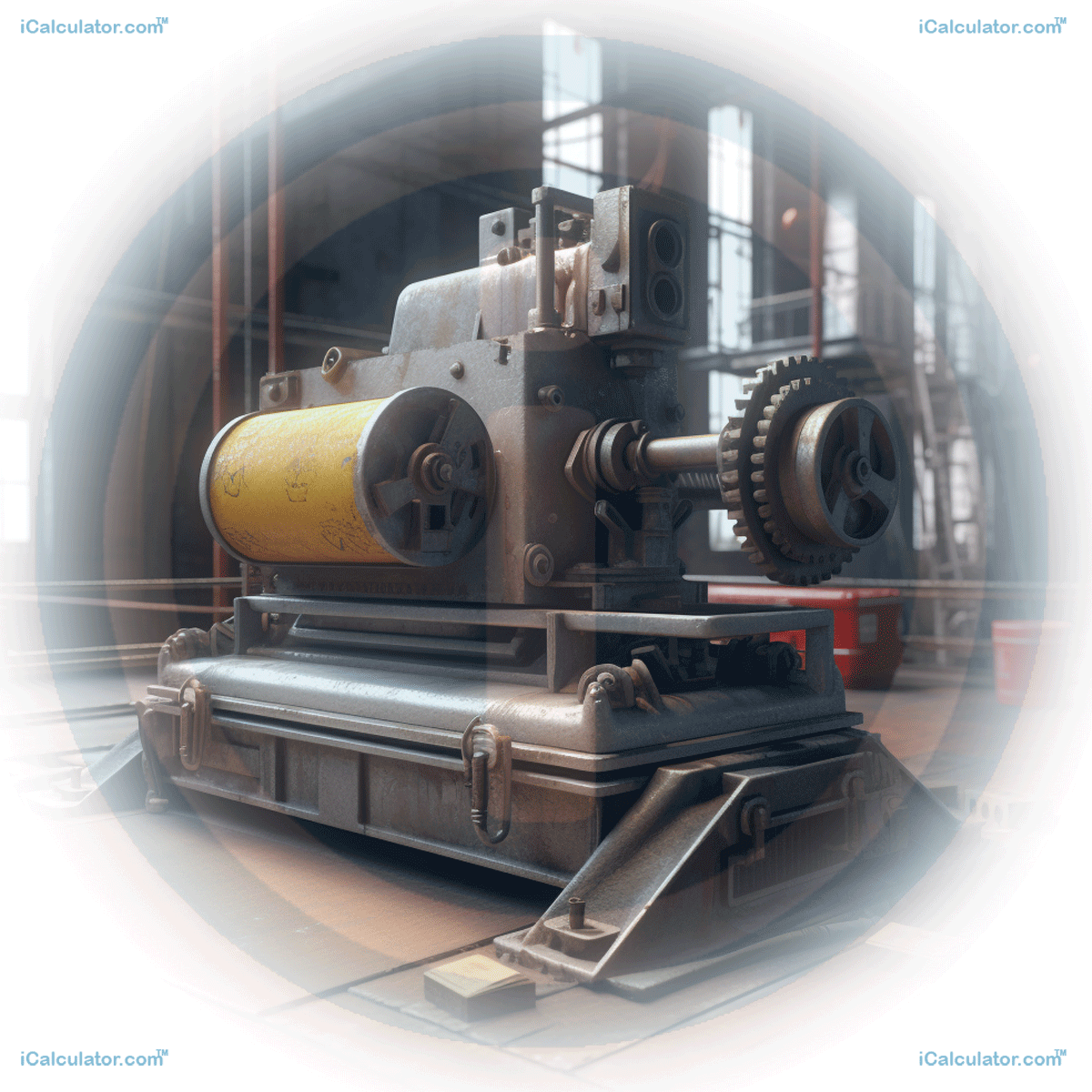Menu
Push / Pull Hydraulic Cylinder Calculator
Welcome to our Push/Pull Hydraulic Cylinder Calculator tutorial! Hydraulic cylinders are widely used in various engineering applications for generating linear motion and applying force. Understanding the push/pull force of a hydraulic cylinder is crucial for designing hydraulic systems, selecting appropriate cylinder sizes, and ensuring optimal performance. This tutorial will guide you through the concept of calculating the push/pull force of a hydraulic cylinder, provide the necessary formula, explain its significance, and showcase real-life applications of these calculations. By the end, you'll have the knowledge and tools to accurately determine the force generated by a hydraulic cylinder in push or pull scenarios.
| Bore of a Cylinder(b) | |
| Pound per Square Inch (PSI) | |
| Diameter of a Rod (d) | |
| Angle (degrees) |
| Push of a Hydraulic Cylinder = (lbs) |
| Pull of a Hydraulic Cylinder = (lbs) |
Please provide a rating, it takes seconds and helps us to keep this resource free for all to use

Interesting Facts
Hydraulic cylinders and their calculations have interesting aspects. Here are a few facts:
- Hydraulic cylinders are mechanical actuators that convert hydraulic energy into linear motion and force.
- These cylinders are commonly used in various industries, including construction, manufacturing, and transportation.
- Hydraulic cylinders can exert tremendous amounts of force, ranging from a few pounds to several hundred tons.
- The force generated by a hydraulic cylinder is proportional to the hydraulic pressure and the effective area of the piston.
Formula
The push/pull force (F) of a hydraulic cylinder can be calculated using the following formula:
F = P × A
Where:
- P is the hydraulic pressure acting on the piston (in pressure units, typically pounds per square inch or PSI)
- A is the effective area of the piston (in area units, typically square inches or in²)
Example: Hydraulic Press
Let's consider an example where you need to calculate the push force of a hydraulic cylinder in a hydraulic press application. The parameters for the example are:
- Hydraulic Pressure (P): 1000 PSI
- Effective Piston Area (A): 10 square inches
Using the given parameters, we can calculate the push force:
F = P × A
F = 1000 × 10
F = 10,000 pounds
Therefore, the push force of the hydraulic cylinder in the hydraulic press is 10,000 pounds.
Real-Life Applications
The calculation of push/pull forces for hydraulic cylinders has significant applications in various engineering disciplines. Here are a few examples:
- Construction Machinery: Hydraulic cylinders are widely used in construction machinery, such as excavators and loaders, to provide powerful pushing and pulling forces for various operations, such as digging, lifting, and pushing heavy loads. Calculating the push/pull forces helps engineers select the appropriate cylinder sizes and hydraulic systems for optimal performance and safety.
- Manufacturing Equipment: Hydraulic cylinders play a critical role in manufacturing equipment, including presses, stamping machines, and material handling systems. By accurately calculating the push/pull forces, engineers can design and optimize these systems to meet the required force specifications for different manufacturing processes.
- Transportation and Automotive Industry: Hydraulic cylinders are used in various applications in the transportation and automotive industry, such as vehicle suspension systems, steering systems, and hydraulic brakes. Calculating the push/pull forces ensures the proper functioning and safety of these systems.
- Aerospace and Aviation: Hydraulic cylinders are vital components in aerospace and aviation applications, such as aircraft landing gear systems and control surfaces. Accurate force calculations are necessary for designing these systems to withstand high loads and ensure precise operation during critical phases of flight.
- Material Handling and Robotics: Hydraulic cylinders are employed in material handling equipment, robotic arms, and industrial automation systems. Calculating push/pull forces helps engineers optimize the design and performance of these systems, enabling efficient and precise movement of heavy loads.
Conclusion
Congratulations! You have successfully completed our Push/Pull Hydraulic Cylinder Calculator tutorial. You now understand the concept, formula, and real-life applications of calculating the push/pull force of a hydraulic cylinder. By utilizing the formula for push/pull force and considering the hydraulic pressure and piston area, you can accurately determine the force generated by a hydraulic cylinder in various engineering scenarios. This knowledge empowers you to design hydraulic systems, select appropriate cylinder sizes, and ensure optimal performance and safety. Keep applying these calculations in your engineering projects to achieve efficient and reliable hydraulic operations. Happy engineering!
Engineering Calculators
You may also find the following Engineering calculators useful.
- Go Kart Speed Calculator
- Temperature Rise In Pumps Calculator
- Transformer Capacity Calulator
- Horsepower Gain From Additional Blower Calculator
- Vehicle Speed Breaking Distance Calculator
- Applied Force And Extension Calculator
- 3 Phase Wattmeter Calculator
- Lathe Boring Time Calculator
- Pitch And Angle Calculator
- Discrete Fourier Transform Calculator
- Total Luminous Flux Calculator
- Paving Calculator
- Cantilever Beam Calculator
- Rectangle Stepping Stone Calculator
- Cantilever Beam Uniform Load Calculator
- Transformer Current Calulator
- Kilowatts To Electric Horsepower Calculator
- Led Energy Savings Calculator
- Vertical Curve Length Road Sag Calculator
- Gold Foil Sheet Weight Calculator